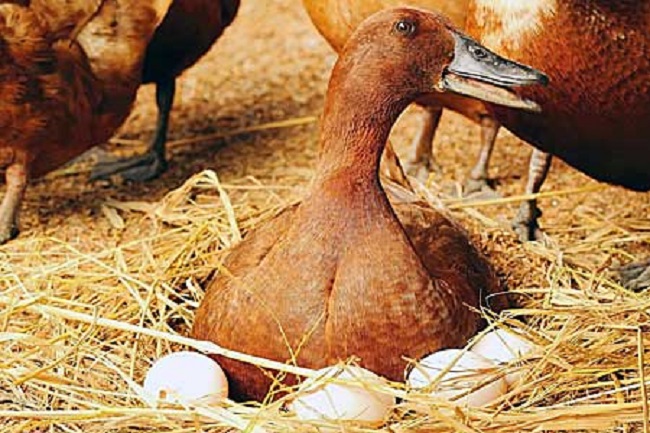When it comes to laying eggs, ducks are surprisingly prolific. Not only do they lay a significant number of eggs, but their eggs are also larger and richer in flavor than the ones we commonly find from chickens.

Duck Breeds that Excel in Egg Laying
This article dives deep into the fascinating world of ducks that lay eggs, providing you with a wealth of information to understand the ins and outs of duck egg production.
1. Khaki Campbell
At the top of the list, we have the Khaki Campbell, renowned for its egg-laying prowess. This breed, which originated in England, can lay up to 300 eggs per year, rivaling even the most productive chicken breeds.
2. Indian Runner
Coming in close is the Indian Runner, a breed known not only for its distinctive upright stance but also for its impressive egg-laying capacity. These ducks can lay up to 200-250 eggs per year.
3. White Layer
As the name implies, the White Layer is a champion egg layer. This breed can lay anywhere from 220-240 eggs per year, making them a preferred choice for egg production.
Going Beyond the Eggs: The Many Roles of Ducks in a Farm Ecosystem
Aside from being excellent egg-layers, ducks play many other roles in a farm ecosystem that make them invaluable to farmers and homesteaders.
1. Pest Control
Ducks are natural foragers and love to eat pests that can harm crops. They hunt slugs, snails, and various insects, reducing the need for chemical pesticides. Unlike chickens, ducks are great at pest control without damaging plants as they do not scratch the ground with their feet.
2. Fertilizers
The droppings of ducks make a fantastic, nutrient-rich fertilizer that can enhance the growth and productivity of your garden. Ducks are much less destructive than chickens, meaning they can be allowed to roam your garden without much worry of them uprooting your plants.
3. Down Feathers
Many duck breeds are excellent sources of down, the soft feathers located beneath the tougher exterior feathers. Down is highly valued for its thermal insulation and padding abilities in various goods, including bedding, pillows, and jackets.
4. Meat Production
Although not all egg-laying ducks are ideal for meat production, some, like the Muscovy and Pekin breeds, are dual-purpose and can provide both eggs and meat. Duck meat is rich and flavorful, providing a delicious alternative to more commonly consumed poultry.
Understanding Duck Egg Production
Ducks generally start laying eggs when they reach 20-30 weeks of age. It’s essential to provide them with a calm, safe, and comfortable environment as ducks can become stressed easily, which can negatively impact their egg production.
Duck eggs are larger and contain more nutrients than chicken eggs, making them a favorite among bakers and chefs for their ability to make dishes richer and more flavorful. They’re particularly high in Omega-3 fatty acids, iron, and protein.
The Benefits and Use of Duck Eggs
Aside from their nutritional value, duck eggs are lauded for their versatility in various culinary applications. They have a thicker yolk and more protein in the white, which allows baked goods to rise higher and provides a richer texture and flavor.
Caring for Egg-Laying Ducks
Raising ducks for eggs is a commitment. They require a balanced diet, fresh water, and a clean, safe environment. Ducks also need a space to roam, as they are happier and healthier with regular exercise.
Conclusion
Raising ducks for egg production is an adventure that can yield rich rewards. Whether you’re interested in self-sufficiency, adding diversity to your breakfast table, or even just providing a happy home for these delightful birds, understanding the egg-laying capabilities of different duck breeds is the first step on this exciting journey.
Remember, the key to a high yield of healthy duck eggs lies in the care and attention you give to your birds. Happy ducks make for a happy flock and, in turn, happy egg collectors. Happy farming!
























